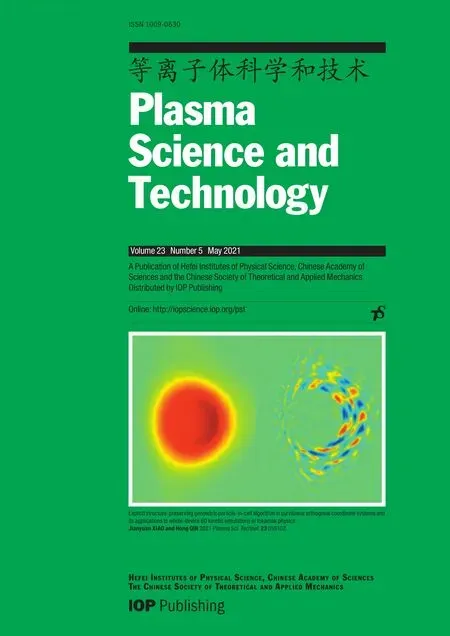The acceleration mechanism of shock wave induced by millisecond-nanosecond combined-pulse laser on silicon
2021-05-22JingyiLI李婧祎WeiZHANG张巍YuZHOU周宇BoshiYUAN苑博识JixingCAI蔡继兴andGuangyongJIN金光勇
Jingyi LI(李婧祎),Wei ZHANG(张巍),Yu ZHOU(周宇),Boshi YUAN(苑博识),Jixing CAI (蔡继兴) and Guangyong JIN (金光勇)
Jilin Key Laboratory of Solid-state Laser Technology and Application, School of Science, Changchun University of Science and Technology, Changchun 130022, People’s Republic of China
Abstract The velocity variation law of shock wave induced by millisecond-nanosecond combined-pulse laser has been investigated experimentally.The pulse delay and laser energy are important experimental variables.The method of laser shadowgraphy is used in the experiment.Experimental results show that when the pulse delay is 2.4 ms, the ms and ns laser energy density is 301 J cm−2 and 12 J cm−2,respectively,the velocity of shock wave is 1.09 times faster than that induced by single ns pulse laser.It is inferred that the shock wave propagates in the plasma is faster than that in air.When the ms and ns laser energy density is 414.58 and 24 J cm−2, the velocity of shock wave shows rising trend with pulse delay in a range of 1.4 ms>Δt >0.8 ms.It is indicated that with the increase of ns laser energy, the laser energy absorbed by laser-supported absorption wave increases.The mechanism of inverse bremsstrahlung absorption acts with target surface absorption simultaneously during the ns laser irradiation.Thus,the phenomenon of the double shock wave is induced.The numerical results of the phenomenon were accordance with experiment.The results of this research can provide a reference for the field of laser propulsion.
Keywords: shock wave, laser-supported absorption wave, plasma
1.Introduction
Silicon is a raw material in the manufacture of electronic devices, and it is widely used in aerospace field.The space debris increases with the rapid development of aerospace field, laser propulsion can be used as a method to remove space debris near earth orbit.Laser propulsion uses highpower laser to irradiate target to produce propulsive force[1–3].High-power laser irradiates the surface of target, the plasma is ignited in vapor, then the plasma expands rapidly and propagates toward laser source.The propagating plasma is generally referred to as a laser-supported absorption wave(LSAW), including laser-supported combustion wave(LSCW)[4–6]and laser-supported detonation wave(LSDW)[7,8],depending on whether they propagate at subsonic or at supersonic speed.After the laser irradiates, a laser-induced shock wave is driven by LSDW and separates from the plasma in the background gas at a certain pressure.It has been already applied to laser shock peening [9, 10], and laser cleaning areas [11–13].
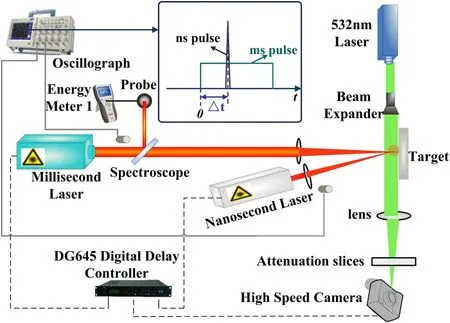
Figure 1.Schematic diagram of experiment setup.
The generation and propagation of plasma and shock wave induced by single pulse laser have been experimentally and numerically investigated[14–17].Recently,S Q Caoet alinvestigated the dynamic evolution and spatiotemporal resolution density of plasma and shock wave induced by microsecond laser in air [18].Q Maet alinvestigated the temperature, electron density of plasma induced by nanosecond pulse laser on aluminum target [19].Kaushik Choudhuryet alexperimentally and numerically investigated the relationship between the density of plasma and structure of shock wave [20].P Prem Kiranet alstudied the interaction of two counterpropagating plasmas and shock wave induced by a nanosecond laser breakdown the air using the method of shadowgraphic imaging technique [21, 22].Wei Zhanget alstudied the process of LSCW induced by the irradiation between aluminum alloy and millisecond pulse laser [23].Xueshi Baiet alstudied the morphology and the internal structure of the plasma induced by nanosecond pulse laser on aluminum target [24, 25].It is pointed out that the plasma production mechanism of millisecond (ms) laser is different from nanosecond (ns) laser, which is thermal conduction and optical breakdown, separately.
The characteristics of plasma and shock wave induced by combined-pulse laser (CPL) which is composed of shortpulse-width lasers have been studied experimentally and numerically [26–28].S Q Caoet alstudied the plume expansion and electron density distribution of plasma induced by nanosecond-picosecond CPL [29].Z F Yanget alinvestigated the expansion and interaction of the two plasmas and shock waves induced by nanosecond and picosecond pulse laser [30].Although much researchers have investigated the plasma and shock wave induced by short-pulse-width lasers as a CPL, yet few studies have investigated that induced by long-pulse-width and short-pulse-width laser as a CPL.Most of the works on the interaction between ms-ns CPL and targets focused on the ablation morphology [31, 32].These works mainly investigated on the effect of plasma or shock wave on the ablation morphology [33–36], rather than the propagation law and acceleration mechanism of shock wave induced by ms-ns CPL.
In this paper, we will attempt to show the propagation law and acceleration mechanism of shock wave induced by ms-ns CPL.The propagation morphology and velocity of shock wave induced by ms-ns CPL on silicon is investigated.The influence of pulse delay and laser energy combination on the character of plasma and shock wave was analyzed to reveal the underly physical mechanism.The results of this study may apply in laser propulsion to optimize laser parameters for acceleration of shock wave.
2.Experiment
The experimental setup is shown in figure 1, the 1064 nm millisecond (ms) laser and 1064 nm nanosecond (ns) laser constitute the laser emission system, the pulse widths of two lasers are 1 ms and 12 ns, separately.The angle of ms laser beam and ns laser beam is 5°.The ms laser and ns laser pass through the focus lens(f=500 mm),then focus on the same point of target.The laser calorimeter is used to record the laser energy through the spectroscope in real-time.Before the ms laser emits,the ms laser transmits the trigger signal to the digital delay generator DG645.After the pulse delay,DG645 transmits the trigger signal to the ns laser.The pulse delay (Δt) of ms laser and ns laser is controlled by DG645.The pulse delay is the time difference from the starting time of ms laser signal to the maximum point of the ns laser signal,which is measured on target by oscilloscope.The shadow photographic technique is used to record the movement evolution of plasma, a 532 nm continuous laser, extender lens, focus lens (f= 50 mm), and high-speed camera (Fastcam SA-Z) are involved in the system.The resolution is 384×160,the exposure time is 1/6300 000 s,the frames per second of camera is 200 000 fps.
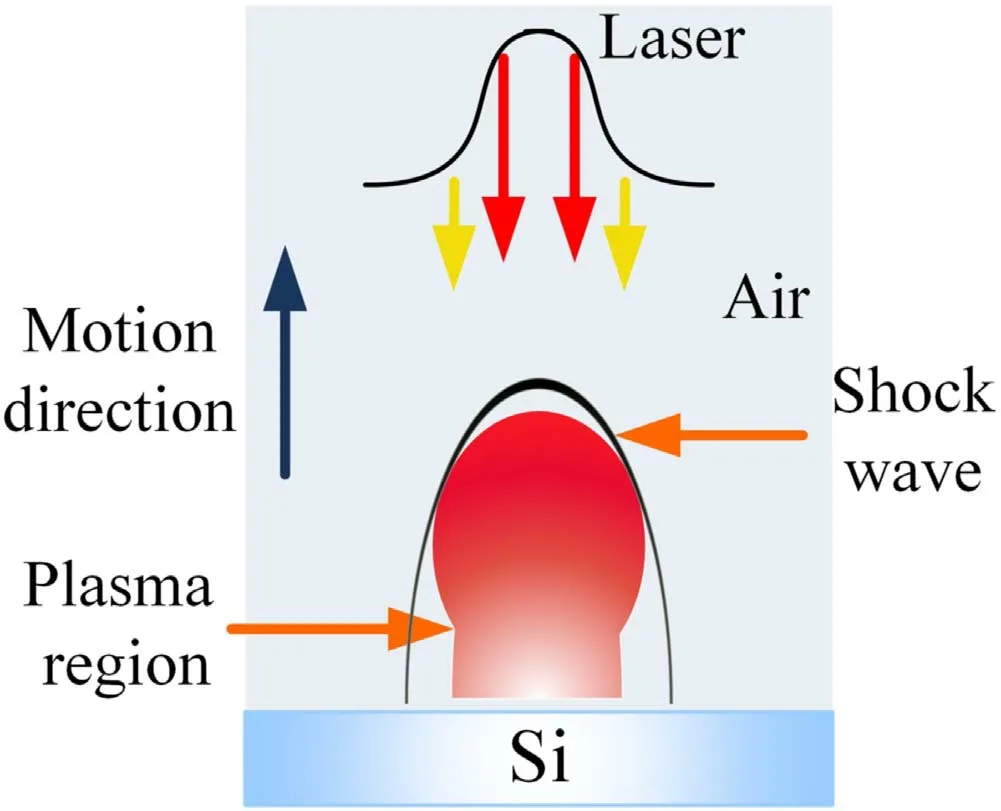
Figure 2.Schematic diagram for physical model.
In the experiment,the radius of ms laser is 0.65 mm,and the radius of ns laser is 0.5 mm,the laser radius defines as the radius of damage morphology on the target under the irradiation of laser.The target is silicon,the thickness is 4 mm and the diameter is 25.4 mm.The experiment environment was in the air,at room temperature,and under normal atmospheric pressure.The repeat time of experiment is 5 times, therefore, the average values of every five experiments are analyzed in this paper.
3.Numerical model
To describe the propagation of plasma and shock wave, a twodimensional axial symmetry physical model is shown in figure 2.The physical process can be regarded as the CPL irradiates the silicon vapor through the air, then plasma and shock wave are produced.The assumptions for this analysis are as follows: (1)local thermodynamic equilibrium can be achieved by collision of low temperature plasma; (2) the gas flow of plasma is laminar;(3) the angle between the two lasers is ignored.
In order to obtain the gas-dynamic structure of plasma region, the conservation of mass (continuity), momentum(Navier–Stokes) and energy (Fourier’s Law) equations are employed for solving the problem [37, 38].The governing equations are:

Here,Tis the temperature,pis the deviation of the pressure fromp0=105Pa,gis the gravity acceleration,ρ,Cp, η and λ are the density, heat capacity, viscosity and thermal conductivity,respectively.Vis the velocity vector of gas flow induced by msns CPL:

TheVmsandVnsare the velocity vectors of gas flow induced by ms laser and ns laser,respectively.The laser energy absorbed by plasma is expressed as:

TheJis laser radiation intensity.μis the coefficient of inverse bremsstrahlung absorption of plasma:

Theχe=pe/pis the relative mole concentration of electrons.peandpare the partial pressure of electrons and total pressure,respectively.WL(t)is laser power density of ms-ns CPL, its expression is:

Here, thePms,Pns,RmsandRnsare ms laser power, ns laser power, ms laser radius and ns laser radius, respectively.fms(t),fns(t)are temporal distribution of ms laser and ns laser:

Here,τms,τnsare the pulse width of ms and ns laser.Δtis the pulse delay between ms laser and ns laser.The heat source associated with thermal radiation transport is:

The selective thermal radiation transport in the multi-group diffusion approximation:
Out of pure spite she was sent in the heat of the day to look after the geese, and would most likely have got a sunstroke if she had not happened to pick up in the fields a large fan, with which she sheltered her face

Here,KR,m,KP,m,UmandUeq,mare the group values of Rosseland opacity, Planck opacity, the radiation density of air plasma and the radiation density of ideal blackbody, averaged over each of theNmspectral intervals.
4.Results and discussion
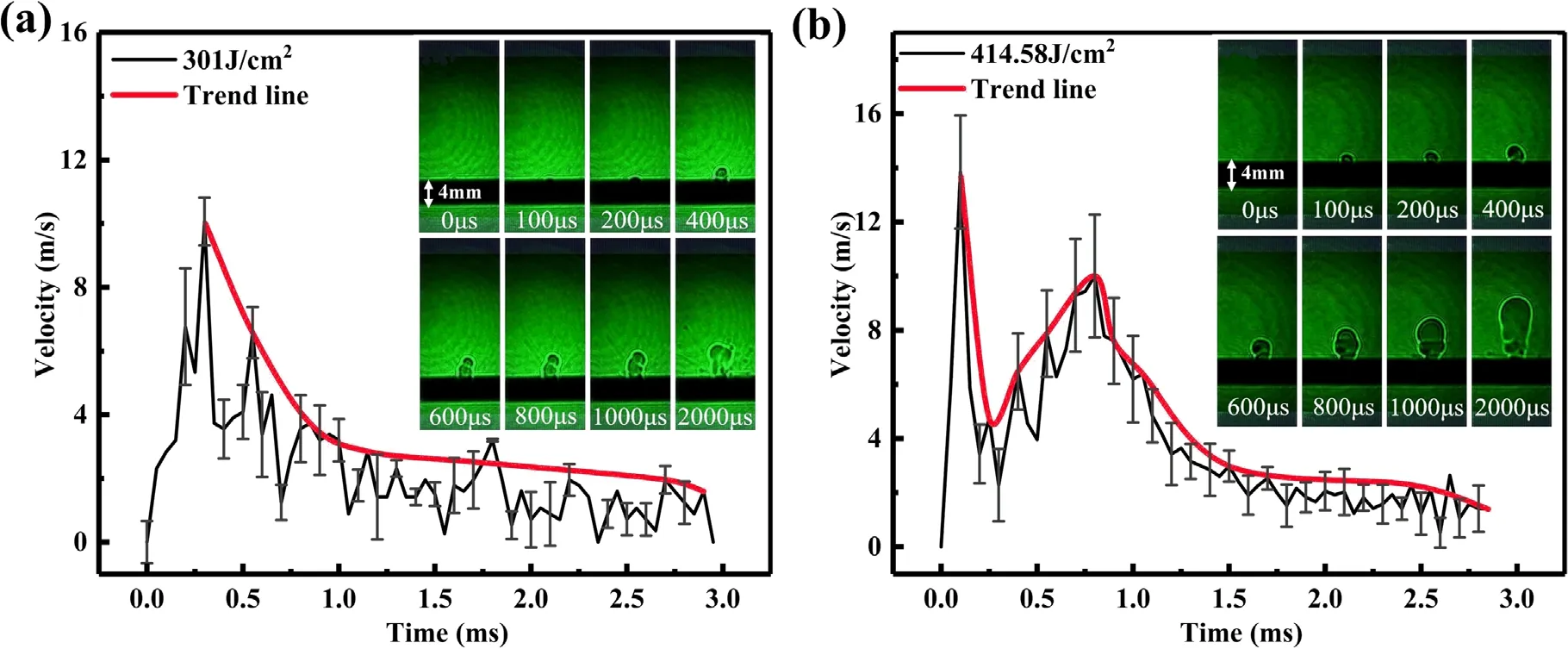
Figure 3.The expansion velocity of plasma induced by ms laser under different energy densities.(a) 301 J cm−2 and (b) 414.58 J cm−2.
In the experiment, the laser energy and pulse delay are both important factors.In order to obtain the propagation mechanism of shock wave induced by ms-ns CPL,it is important to make clear the propagation process of LSAW and shock wave induced by the single ms and ns pulse laser,respectively.The propagation distance of shock wave with different time is obtained by proportion calculation of the high-speed camera images, the velocity of plasma and shock wavevis calculated.

Here,+Ln1andLnare the propagating distances between plasma or shock wave and target with different time, andtis the time interval between the propagating distances.
4.1.The LSAW induced by ms pulse laser
In figure 3,it is shown that the velocity of plasma induced by the single ms pulse laser with different laser energy densities(301 and 414.58 J cm−2) is obvious different.Millisecond pulse laser belongs to long pulse width laser, the main generation mechanism of plasma is thermal conduction.The plasma expansion velocity reaches the first peak precipitously in 0 to 0.2 ms, at this time the target begins to melting and evaporation.With the increase of vapor density, the transparent vapor begins to transform into opaque, the plasma is formed.The trend of plasma expansion velocity is obviously different with different laser energy densities in 0.2 to 1 ms,the overall trend of plasma expansion velocity declines while the ms laser energy density is 301 J cm−2as shown in figure 3(a).In contrast, the plasma expansion velocity increases and has reached to the second peak at about 0.8 ms while the ms laser energy density is 414.58 J cm−2, which indicates that the plasma needs enough laser energy to transform into LSAW.The plasma absorbs ms laser energy through inverse bremsstrahlung absorption mechanism at about 0.8 ms,at that time the LSAW is ignited.It can be said that the inverse bremsstrahlung absorption coefficient shows an uptrend after 0.8 ms.The parameters in numerical result are similar to the experimental parameters as shown in figure 4(b), the experimentally determined average propagation velocity and distance of LSAW are 10 m s−1and 5.28 mm, respectively, whereas the same for the numerical result are 9.6 m s−1and 5.05 mm, respectively.
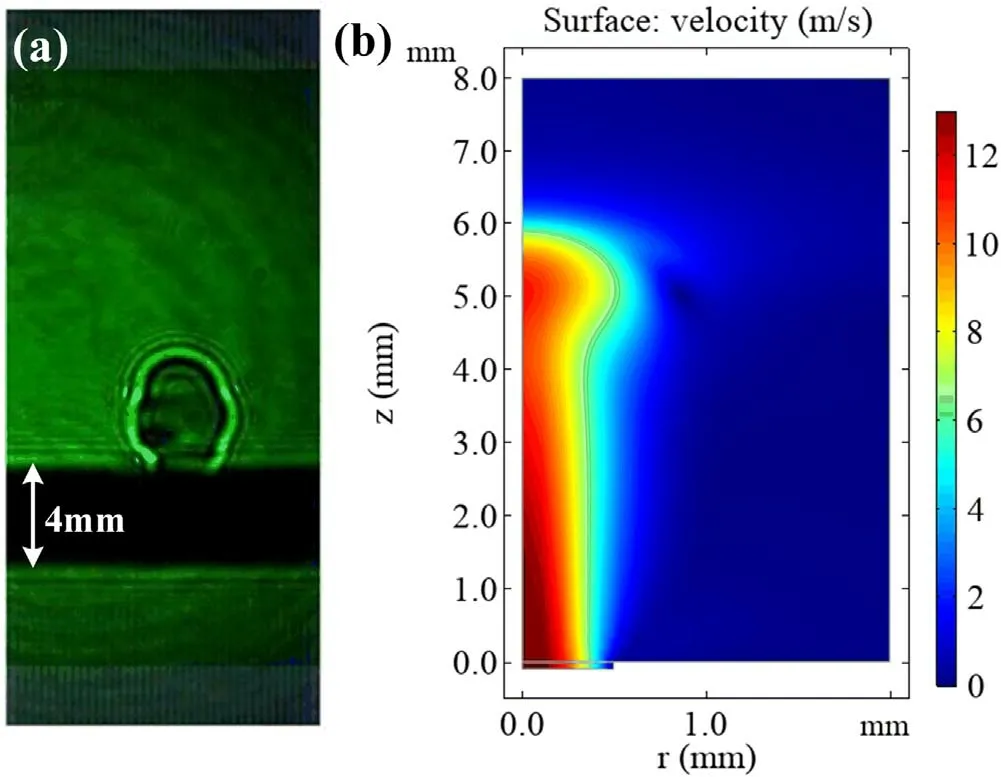
Figure 4.The propagation morphology of LSAW at 0.8 ms determined by experiment (a) and numerical result (b).
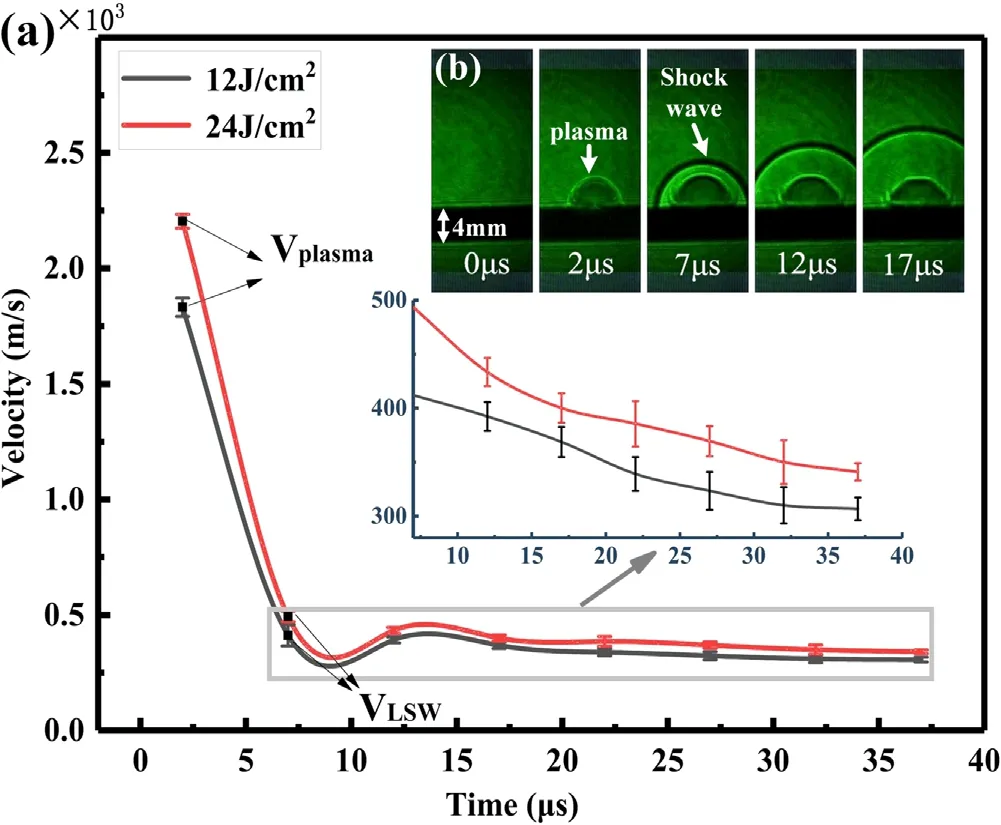
Figure 5.The propagation velocity(a)and morphology(b)of plasma and shock wave induced by ns pulse laser.
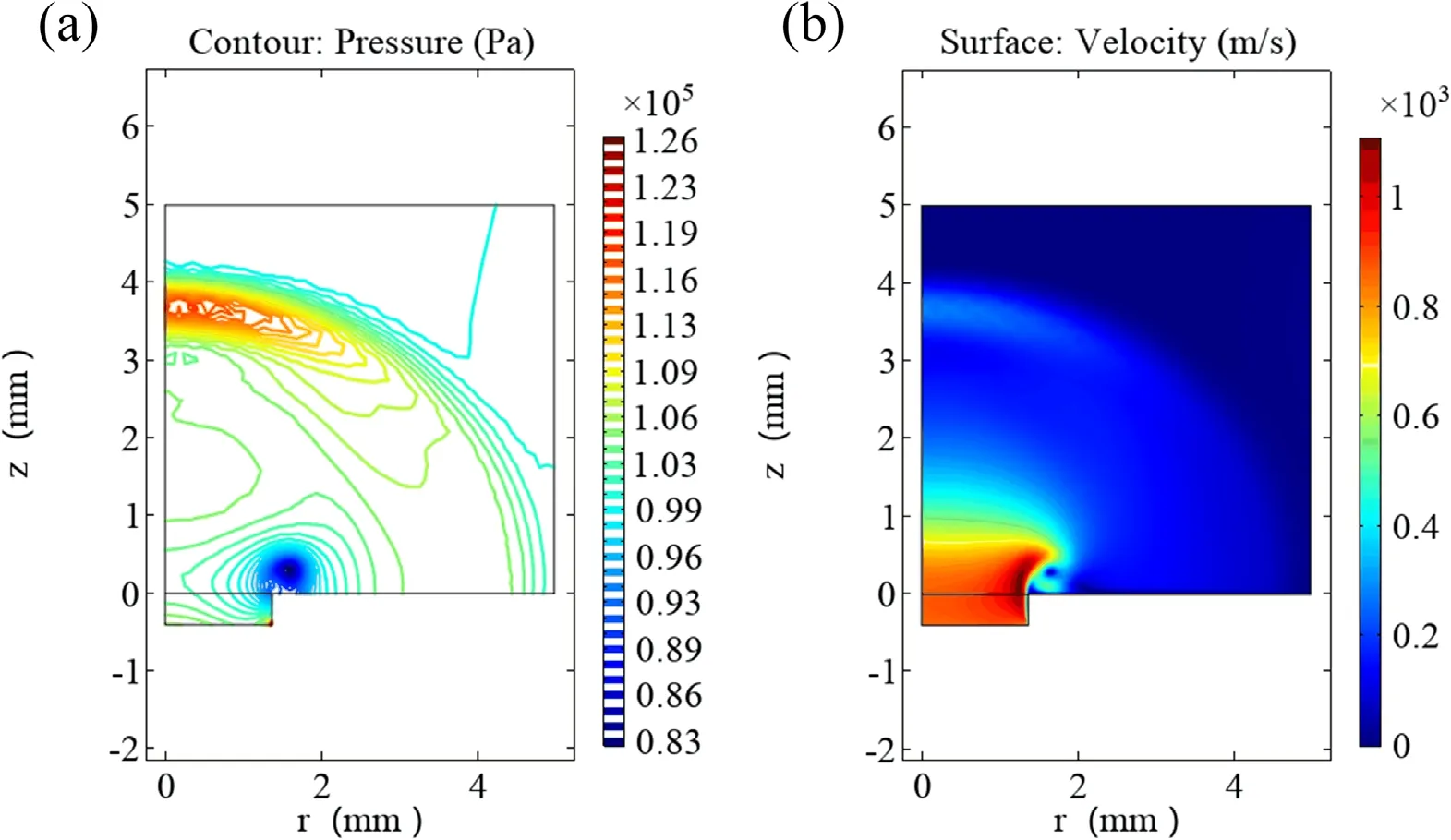
Figure 6.The pressure (a) and velocity (b) of shock wave by numerical calculation.

Table 1.The ms-ns CPL energy density.
4.2.The LSAW and shock wave induced by ns pulse laser
Figure 5(a) shows the propagation velocity of plasma and shock wave induced by ns pulse laser, the propagation velocity of plasmaVplasmacould reach over 1.8 km s−1at 2 μs,opaque plasma was produced as shown in figure 5(b).The ns pulse laser belongs to short pulse width laser,a super thermal liquid layer is formed on the melting part of the target during the irradiation of ns laser.Then it transformed into vapor and droplet instantly by absorbing the laser energy, so as to form high density plasma.Finally, the shock wave is formed.
Figure 6 shows the distribution of the pressure and velocity of the shock wave,the maximum pressure distributes in the vicinity of shock wave.However, the velocity of plasma plume nearby the surface of target is larger than the velocity of shock wave.It might be concluded that the recoil force of shock wave flows back to the surface of target,hence the velocity of plasma plume flow increases [39, 40].
4.3.The shock wave induced by ms-ns CPL
Based on figure 5(a), the velocity of plasma and shock wave decreases monotonically with the increase of time, therefore,the maximum velocity of shock wave is used to evaluate the trends in the following study.In this research, its experimental parameters are shown in table 1.
As shown in figure 7(a),comparing the two curves(Cases 1,2),it can be found that the trend of the two curves is roughly the same.The velocity of shock wave declines with pulse delay in the range of 1.4 ms>Δt>0.4 ms and rises at a small scale when 3 ms>Δt>1.4 ms in case 1 and case 2.However, in case 1, the velocity of shock wave is obviously accelerated with pulse delay in the range of 3 ms>Δt>2 ms, the velocity of shock wave induced by CPL is higher than that induced by single ns laser.
The morphologies of plasma and shock wave in case 1 and case 2 when Δt=2.4 ms are shown in figure 8, the morphologies of plasma are obviously different at 2402 μs.In case 1,the propagation distance of plasma induced by ns laser is lower than that induced by ms laser at 2402 μs.It is implied that the ns laser induces plasma mainly through ionizing the target, then the shock wave propagates in the plasma that induced by ms laser.Therefore, the transformation of shock wave propagating medium might be the important factor for the acceleration phenomenon.However,in case 2,the energy density of ns laser(24 J cm−12)increases so that it can ionize the plasma and target, simultaneously.The ns laser energy which induces the shock wave is divided into two parts.Thus,the velocity of shock wave induced by CPL is lower than that induced by single ns pulse laser.

Figure 7.The maximum velocity of shock wave with different laser energy densities and pulse delays.
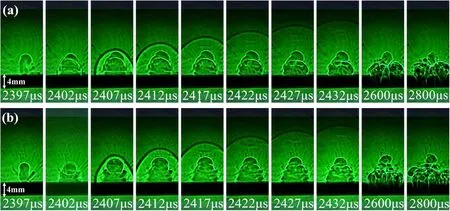
Figure 8.The morphology of shock wave induced by CPL when Δt=2.4 ms in case 1 (a) and case 2 (b).
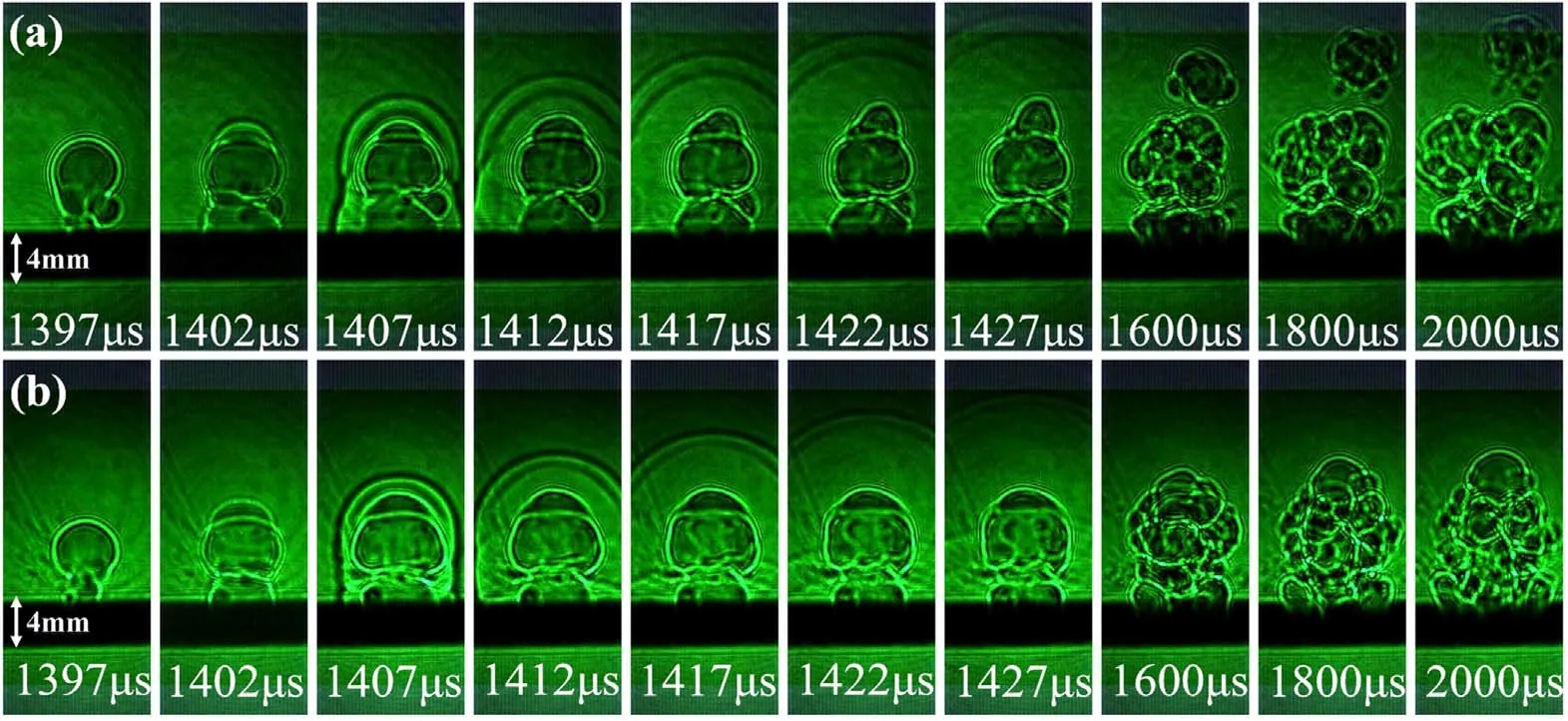
Figure 9.The morphology of shock wave induced by CPL when Δt=1.4 ms in case 3 (a) and case 4 (b).
As shown in figure 7(b), comparing the two curves(Cases 3, 4), it can be found that there is no acceleration phenomenon in case 3 and case 4.Specially, the velocity of shock wave shows downtrend in case 3 and the rising trend in case 4 with pulse delay in the range of 1.4 ms>Δt>0.8 ms, respectively.This might be due to the ignition of LSAW at 0.8 ms (see figure 3), it can absorb laser energy to promote forward by the mechanism of inverse bremsstrahlung absorption.In the case of same ms laser energy,the energy of ns laser in case 3 is smaller than that in case 4,the ionization degree of LSAW by ns laser in case 3 is also smaller than that in case 4.It can be inferred that the higher the energy density of ns laser is, the greater the energy absorbed by plasma.When the energy density of ns laser(12 J cm−2)is small,the surface absorption of the target plays a more dominant role than inverse bremsstrahlung absorption of LSAW.With the increase of ns laser energy density(24 J cm−2), the mechanism of inverse bremsstrahlung absorption becomes more and more important [41], it acts with target surface absorption simultaneously during the ns laser irradiation.Therefore,the velocity of shock wave increases with the increase of inverse bremsstrahlung absorption coefficient.This indicates that the ignition of the LSAW induced by ms laser might accelerate the shock wave velocity while the ns laser can completely ionize the LSAW.
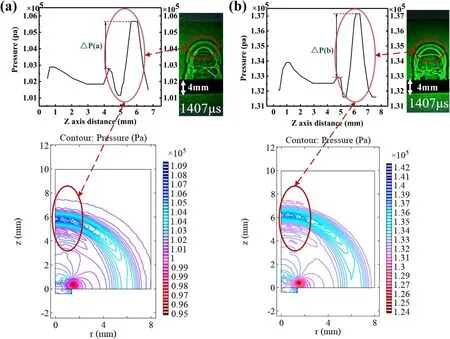
Figure 10.The numerical pressure of double-shock wave at 1407 μs in case 3 (a) and case 4 (b).
The morphologies of plasma and shock wave in case 3 and case 4 when Δt=1.4 ms are shown in figure 9.The mechanism of inverse bremsstrahlung absorption and target surface absorption simultaneously acts during the ns laser irradiation.Therefore, the target and LSAW absorb ns laser energy to generate the phenomenon of the double shock wave at 1407 μs[42].With the propagation of double shock wave induced by CPL,the turbulent effect of plasma is generated in front of target at 1.6 ms.Meanwhile,the front part of turbulent plasma moves forward obviously in case 3.Nevertheless, the front part of turbulent plasma has no obvious forward movement trend in case 4.This is because with the increase of ns laser energy density, the pressure of shock wave increases, therefore, its recoil pressure can restrain the forward movement trend of turbulent plasma.In the process of double shock wave propagation, the first shock wave is mainly induced by irradiation between ns laser and LSAW by mechanism of inverse bremsstrahlung absorption,its recoil pressure can restrain the forward movement trend of turbulent plasma.The second shock wave is mainly induced by the irradiation between ns laser and target,its pressure can promote the forward movement trend of turbulent plasma.As mentioned in the previous paragraph, when the energy density of ns laser is 12 J cm−2, the laser energy absorbed by target is larger than that of LSAW,the pressure of second shock wave might be larger than the recoil pressure of first shock wave, that makes the front part of turbulent plasma move forward obviously.With the increase of ns laser energy density(24 J cm−2),the laser energy absorbed by LSAW begins to increase,the pressure of second shock wave might be getting closer to the recoil pressure of first shock wave,so the front part of turbulent plasma has no obvious forward movement trend.
The pressure distribution of double-shock wave at 1407 μs in case 3 and 4 is shown as figure 10,there are two peak values of pressure in the front of shock wave which is in accordance with the phenomenon of double shock wave.The pressure difference of double shock wave ΔP( a) in case 3 is larger than ΔP(b ) in case 4, it is inferred that the ratio of nanosecond laser energy absorbed by target in case 3 is larger than that in case 4, otherwise, the ratio of nanosecond laser energy absorbed by LSAW in case 4 is larger than that in case 3.The numerical result is consistent with the analysis of the mechanism of laser energy absorption and the motion of turbulent plasma that mentioned above.
In summing up, comparing the cases that mentioned above, firstly, the acceleration phenomenon of the shock wave only occurs in case 1 with pulse delay in the range of 3 ms>Δt>2 ms (see figure 7(a)).It is referred that the shock wave propagating in the plasma is faster than that in air.Secondly, the velocity of shock wave almost all showed downtrend with pulse delay in the range of 0.8 ms<Δt<1.4 ms in cases 1, 2, and 3 (see figure 7).Specially, the velocity of shock wave shows rising trend in that period in case 4.It is indicated that when the ms laser does not ignite a LSAW, the main absorption mechanism of ns laser irradiation is the surface absorption of the target.With the increase of ns laser energy,the laser energy absorbed by plasma increases.It leads to the velocity of shock wave induced by CPL lower than that induced by ns single pulse laser.When the ms laser ignites a LSAW, the mechanism of inverse bremsstrahlung absorption and target surface absorption acts simultaneously during the ns laser irradiation.The ns laser energy increases,the laser energy absorbed by LSAW increases.Thus, the velocity of shock wave shows uptrend in case 4.For ns laser, the LSAW which is induced by ms laser is similar to a laser absorption region which is easier to ionize.It is indicated that the ignition of the LSAW induced by ms laser might accelerate the shock wave velocity while the ns laser can completely ionize the LSAW.
5.Conclusion
In this paper, we have experimentally studied the propagation morphology and velocity of shock wave induced by ms-ns CPL.Our propose is to obtain the propagation law and mechanism of shock wave in different conditions,such as different pulse delays and laser energy densities.The experimental results show that when the pulse delay is 2.4 ms, the ms and ns laser energy density is 301 and 12 J cm−2,the velocity of shock wave is 1.09 times faster than that induced by single ns pulse laser.Thus,when the density of plasma is too low to absorb ns laser energy by the mechanism of inverse bremsstrahlung absorption, the shock wave propagating in the plasma is faster than that in air.Otherwise, when the ms and ns laser energy density is 414.58 and 24 J cm−2, the velocity of shock wave shows rising trend with pulse delay in the range of 1.4 ms>Δt>0.8 ms.When the plasma induced by ms laser becomes a LSAW, the mechanism of inverse bremsstrahlung absorption and target surface absorption acts simultaneously during the ns laser irradiation.With the increase of ns laser energy, the laser energy absorbed by LSAW increases,that makes the velocity of shock wave show uptrend.Due to the mechanism of inverse bremsstrahlung absorption and target surface absorption acts simultaneously,the phenomenon of the double-shock wave is induced.The numerical results are accordance with experiment.
As a further evolution, ignition of the LSAW induced by ms laser might accelerate the velocity of shock wave while the ns laser can completely ionize the LSAW.It can be inferred that the important conditions for acceleration of the shock wave induced by ms-ns CPL are as follows, using the low-density plasma as a medium, the ms pulse laser energy can ignite LSAW and the ns pulse laser energy can completely ionize the LSAW.The technology of shock wave acceleration induced by ms-ns CPL can avoid disadvantages of shock wave induced by single pulse laser, such as short duration of shock wave induced by ns laser,difficulty for ms laser to ignite shock wave and so on.The research results of this paper have important guiding significance for field of laser propulsion.
Acknowledgments
This study is supported by the Natural Science Foundation of Jilin Province (No.20200201194JC), the Education Department of Jilin Province (No.JJKH20200735KJ),and National Natural Science Youth Science Fund Project(No.62005023).We really appreciate Jilin Key Laboratory of Solid-state Laser Technology and Application for supporting our experiment.
猜你喜欢
杂志排行
Plasma Science and Technology的其它文章
- UV and soft x-ray emission from gaseous and solid targets employing SiC detectors
- Investigation of non-thermal atmospheric plasma for the degradation of avermectin solution
- Laser-induced breakdown spectroscopy for the classification of wood materials using machine learning methods combined with feature selection
- Colorimetric quantification of aqueous hydrogen peroxide in the DC plasma-liquid system
- Plasma-assisted Co/Zr-metal organic framework catalysis of CO2 hydrogenation:influence of Co precursors
- Quantitative analysis of uranium in electrorecovery salt of pyroprocessing using laserinduced breakdown spectroscopy
